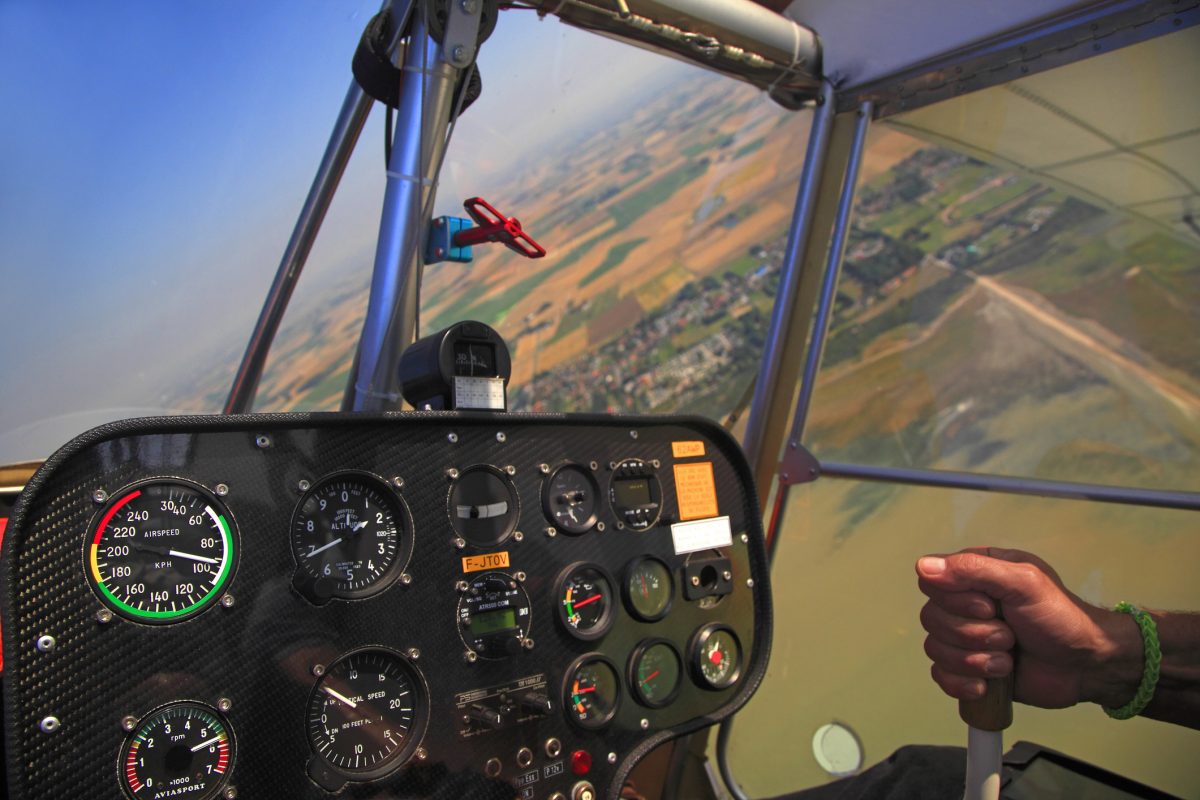
If you’re like most pilots, you’ve probably taken your fair share of photos from the cockpit. But when you’re capturing the views from high in the clouds, have you ever wondered how aerial photography got its start? As it turns out, snapshots from the skies have been around since before the invention of the airplane.
Hot Air Balloons
The oldest surviving aerial photo was taken in 1860 by James Wallace Black from a hot-air balloon above Boston, but this is not the first aerial picture ever taken. That feat is credited to Gaspard-Fexix Tournachon, who photographed Paris from 1,600 feet in 1858 from a tethered balloon.
Photography was in its infancy and primitive at this time. Both men had to carry a complete darkroom in the baskets of their balloons to develop the photos. In a few years, the dry-plate process was invented, and it was no longer necessary to carry such heavy equipment. Thus, the first free-flight balloon photo was taken in 1879.
Kites
Over the next few years, photographic technology continued to advance, and soon it was possible to attach cameras to pilotless flying objects. Douglas Archibald, an English meteorologist, is credited with the first successful photo taken from a string of kites in 1882. A few years later, Arther Batut was able to attach a timer to a camera and set it to trigger the shutter within a few moments of launching his solo kite.
In 1906, San Francisco was hit by an earthquake and raging fires. The destruction was aerially captured by George R. Lawrence using a camera attached to a string of 17 kites that lifted the heavy camera 2,000 feet. His curved film plate was able to produce wide panoramic images, some of which remain the largest photos ever taken from the skies.
Pigeons
During WWI, balloons and kites were too easy to shoot down. Some armies resorted to using pigeons to obtain a literal “bird’s eye view” behind enemy lines.
The Bavarian Pigeon Corps used carrier pigeons to carry messages and provide aerial reconnaissance. The pigeons were equipped with lightweight breast-mounted cameras, which were invented by Dr. Julius Neubronner in 1908. Each miniature camera was set to snap at 30-second intervals along the pigeon’s flight path. While the Pigeon Corps proved to be useful, the photographs were unpredictable, and the birds were occasionally shot down by hungry troops fending for their next meal.
Rockets
In 1897, Alfred Nobel, the famed inventor who later established the Nobel Prize, successfully mounted a camera to a rocket. Seven years later, Albert Maul used a rocket to take an aerial picture from 2,600 feet. The camera was then ejected and parachuted to the ground. As WWII approached, Maul had improved his design, but by then, airplanes were proving to be more useful than rockets for aerial photography.
Airplanes
Not long after the Wright Brothers made their first powered flight, the first aerial photograph was taken from an airplane. In 1908, cinematographer L.P. Bonvillain took a photo from an airplane piloted by Wilbur Wright over Le Mans, France. By World War I, battle maps produced from aerial photos taken from aircraft were used by both sides. Cameras were now specifically designed for airborne use, but stability and shutter speed continued to be a drawback. Near the end of the war, Sherman M. Fairchild developed a camera with the shutter located inside the lens, which significantly improved image quality.
After WWI, Fairchild used a series of overlapping pictures to create an aerial map of Manhattan. Other cities also found these surveys to be superior to mapping from the ground, and commercial aerial photography quickly took off. During WWII, aerial photography was commonplace. Aerial images from the war front were regularly featured in newspapers and magazines, and aerial video footage was often used to create movie theatre newsreels and propaganda.
Fairchild’s camera technology was the standard for aerial cameras for the next 50 years. Before he died in 1971, he saw his cameras carried on Apollo 15, 16, and 17 to map the face of the moon.
Drones
Drone/UAV photography technology has exploded in popularity in recent years. Drones can be automated to follow a specific flight path or manually operated to take a photo or video at a particular angle at any time during the flight.
Today, high quality, digital aerial photography is used for an extensive set of commercial, industrial, agricultural, and governmental uses. And now that store-bought drones are more affordable and accessible, hobbyists can enjoy capturing their own aerial photographs without ever leaving the ground.
We love seeing aviation photography from Hartzell Propeller fans. Be sure to tag us on Facebook, Twitter, and Instagram: @HartzellProp.